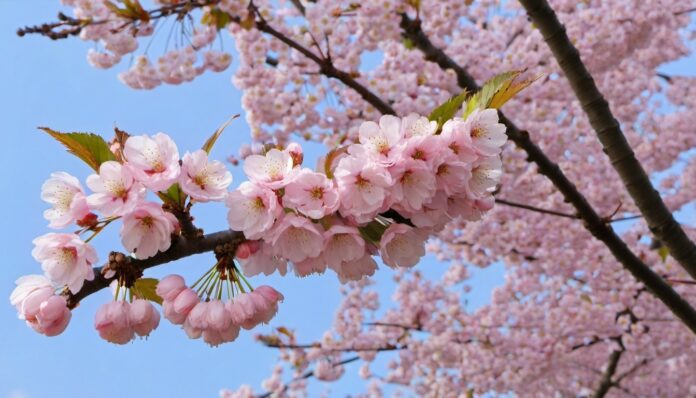Spring is one of the four seasons characterized by the rejuvenation of life in nature after the cold winter months. It typically begins in March in the Northern Hemisphere and September in the Southern Hemisphere, heralded by the blooming of flowers, the return of migratory birds, and warmer temperatures.
Spring is a time of renewal and growth, as plants emerge from dormancy, animals awaken from hibernation, and landscapes burst into vibrant colors. It’s a season of hope and optimism, symbolizing new beginnings and the promise of brighter days ahead.
Interesting Facts About Spring
- The word “spring” comes from the Old English word “springan,” meaning “to leap or burst forth.”
- Spring equinox, also known as the vernal equinox, marks the official start of spring in the Northern Hemisphere, occurring around March 20th.
- In the Southern Hemisphere, the spring equinox occurs around September 22nd.
- Spring is a transitional season between winter and summer, characterized by milder temperatures and longer daylight hours.
- Cherry blossoms, also known as sakura, are iconic symbols of spring in many cultures, particularly in Japan.
- Spring is a peak season for allergies, as pollen from trees, grasses, and flowers becomes airborne.
- The melting of snow and ice in spring leads to increased water flow in rivers, streams, and lakes, contributing to seasonal flooding in some areas.
- Daylight saving time, which extends daylight hours in the evening, begins in many countries during the spring months.
- Spring is a popular time for gardening, with many people planting flowers, vegetables, and herbs in anticipation of warmer weather.
- The spring thaw, also known as “break-up” or “mud season,” can cause muddy roads and slippery conditions as frozen ground begins to thaw.
- Many animals give birth or hatch their young in spring, taking advantage of the abundance of food and favorable weather conditions.
- The spring migration of birds is a spectacular natural phenomenon, with millions of birds traveling thousands of miles to breeding grounds in the Northern Hemisphere.
- Spring is associated with festivals and celebrations in many cultures, such as Easter, Passover, and Holi.
- The return of daylight in spring triggers hormonal changes in animals, leading to behaviors such as mating and nesting.
- In some cultures, spring is associated with rebirth, renewal, and fertility, symbolized by eggs, rabbits, and other symbols of new life.
- The spring months are a popular time for outdoor activities such as hiking, picnicking, and birdwatching.
- The spring sky is often clear and blue, making it an ideal time for stargazing and astronomy.
- The arrival of spring is celebrated in many cultures with rituals, ceremonies, and festivals to honor nature and the changing seasons.
- In temperate climates, the first signs of spring include the emergence of snowdrops, crocuses, and daffodils from the ground.
- Spring cleaning is a tradition in many cultures, involving the deep cleaning and decluttering of homes after the winter months.
- The spring equinox is one of two times in the year when the sun rises due east and sets due west at every location on Earth.
- In ancient times, spring equinox celebrations were held to honor gods and goddesses of fertility and agriculture.
- The increased daylight hours and warmer temperatures of spring stimulate plant growth and photosynthesis, leading to lush greenery and blooming flowers.
- The spring months are a time of transition for animals, with some species emerging from hibernation and others preparing for migration or breeding.
- The spring equinox has been celebrated for thousands of years in cultures around the world, often with feasts, dances, and rituals to welcome the return of light and warmth.
- The spring equinox marks the midpoint between the winter and summer solstices, when daylight hours begin to lengthen.
- Spring is a time for renewal and rejuvenation in nature, as plants awaken from dormancy and animals emerge from hibernation.
- The arrival of spring is eagerly anticipated by many people, who look forward to warmer weather, blooming flowers, and outdoor activities.
- The longer days and milder temperatures of spring encourage people to spend more time outdoors, enjoying nature and engaging in physical activity.
- The spring months are a time of hope and optimism, symbolizing new beginnings, growth, and the cycle of life.
